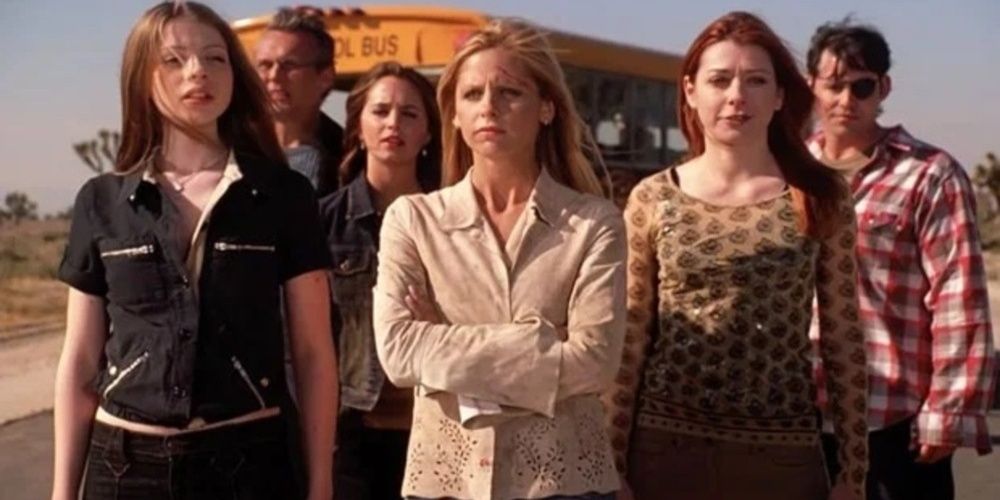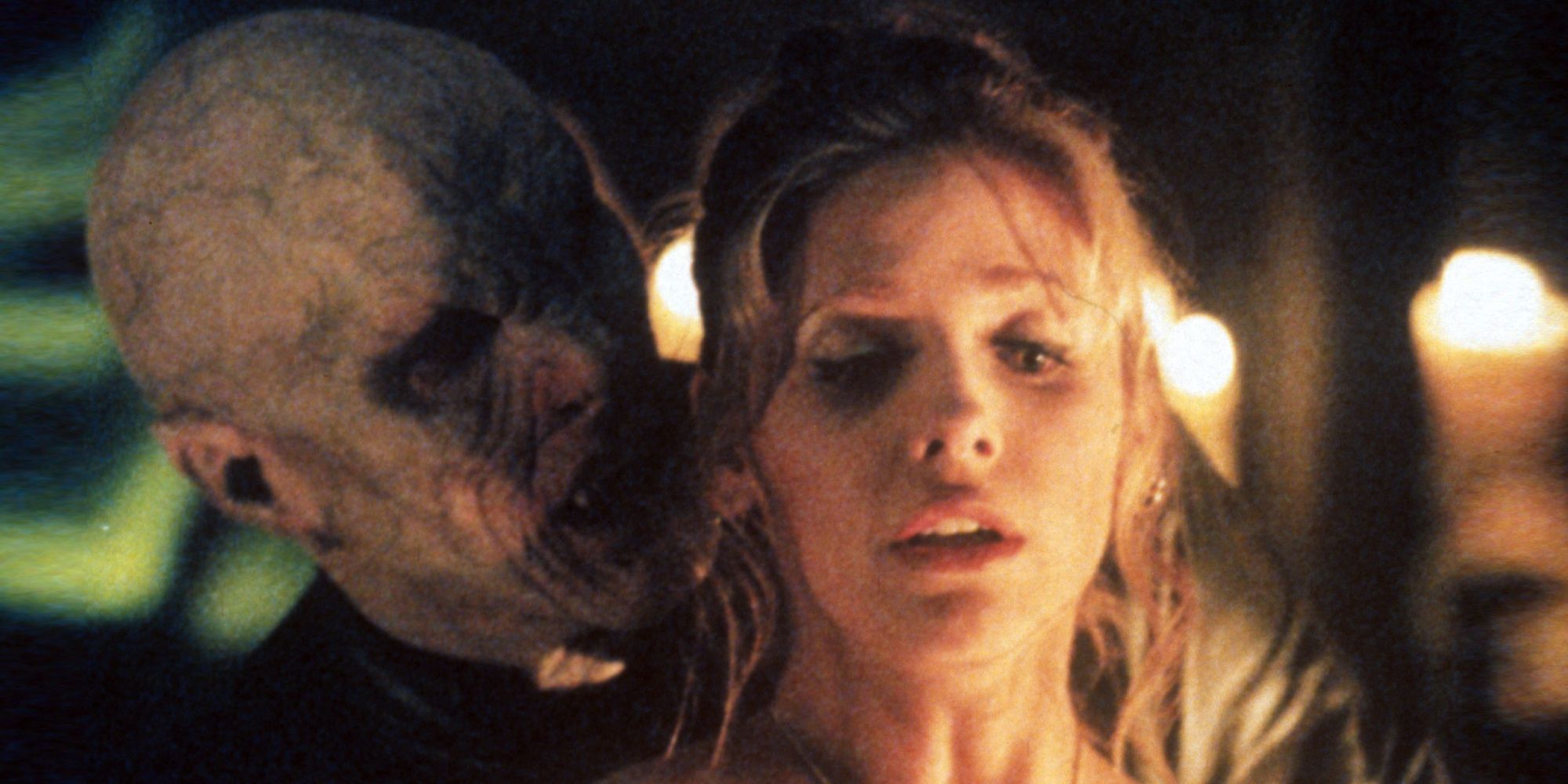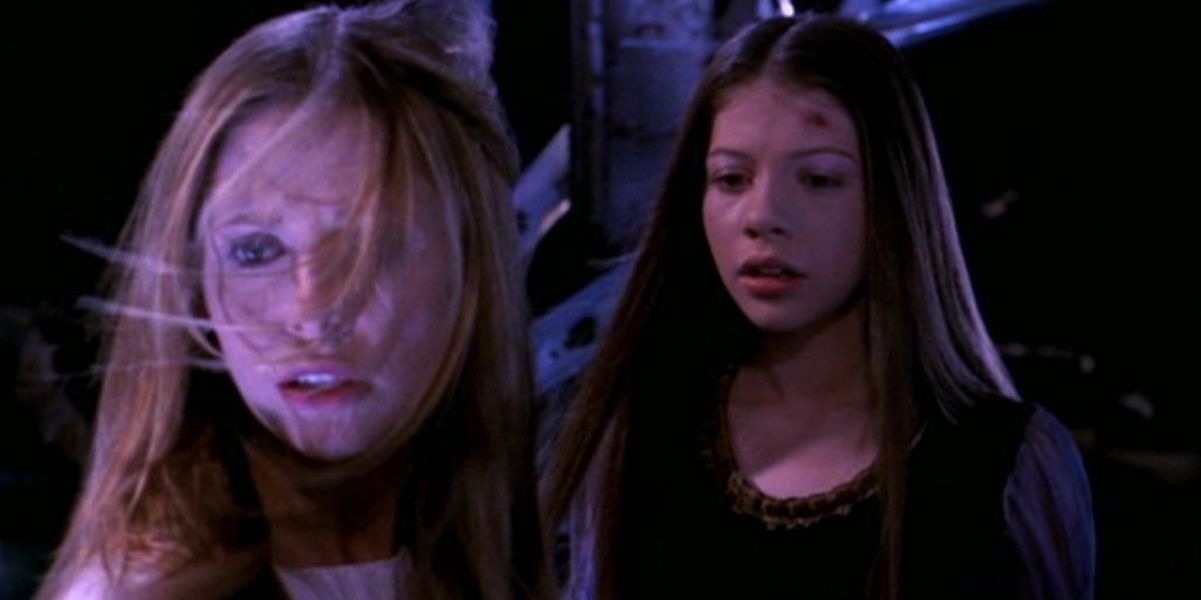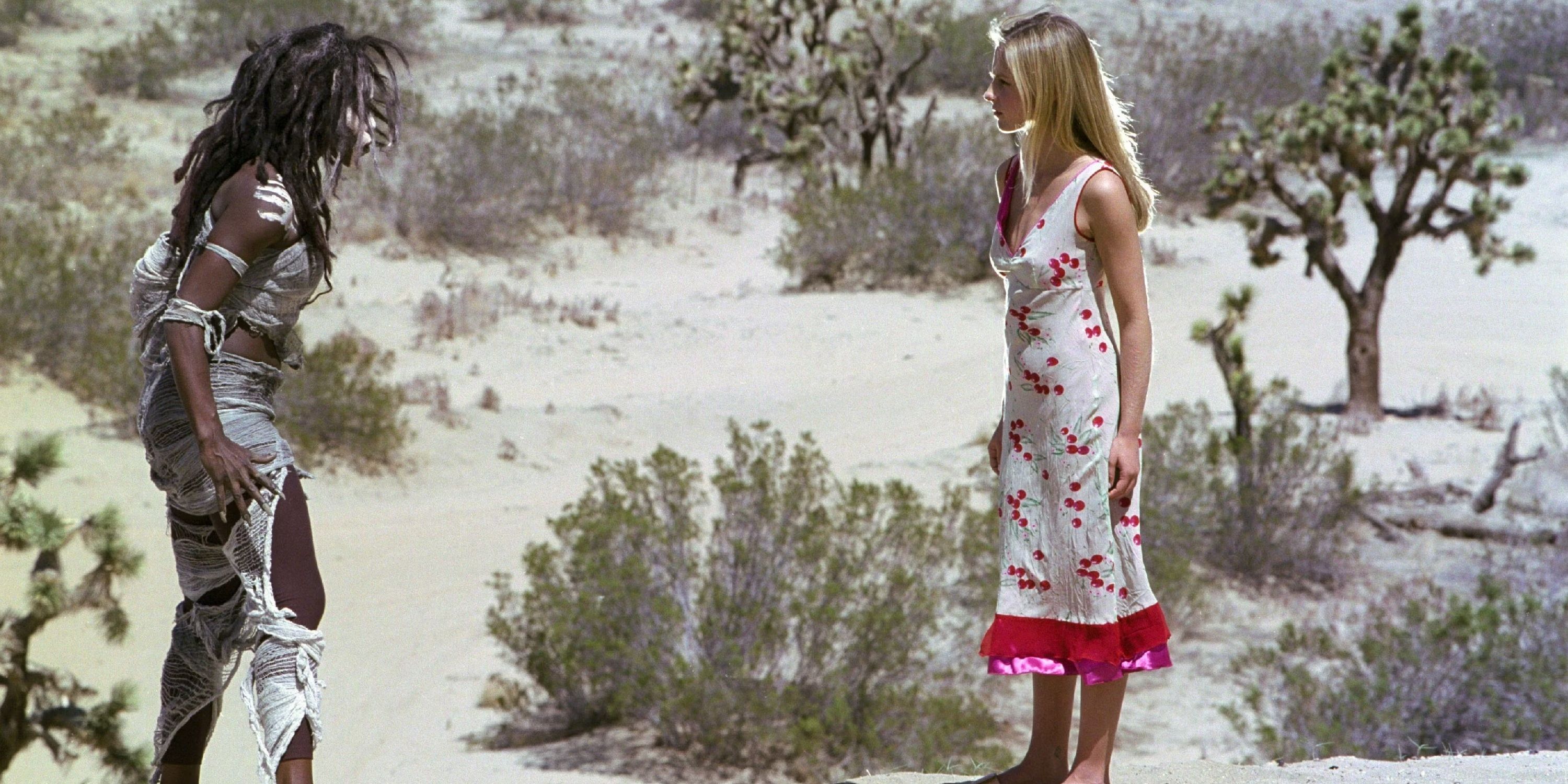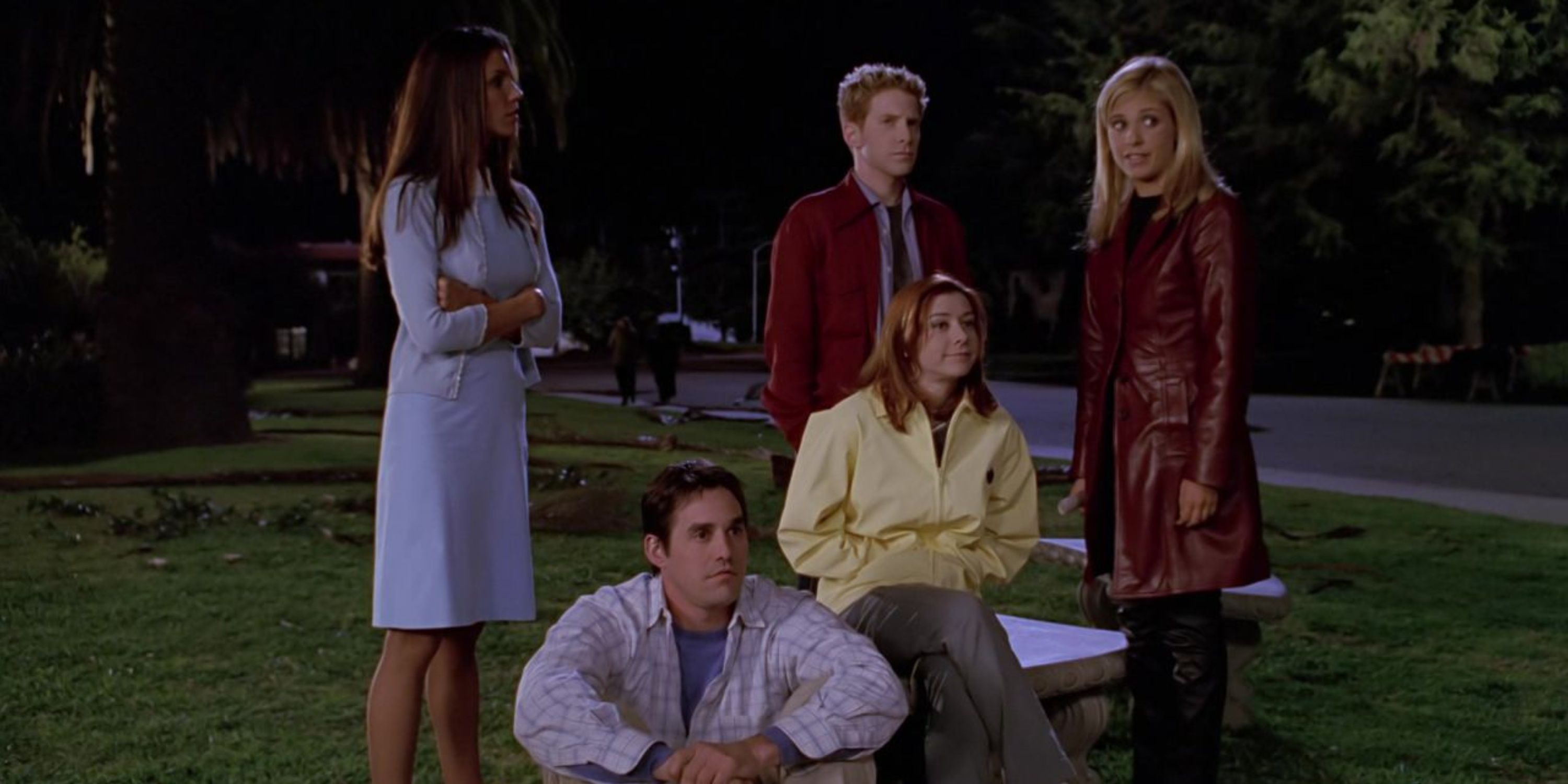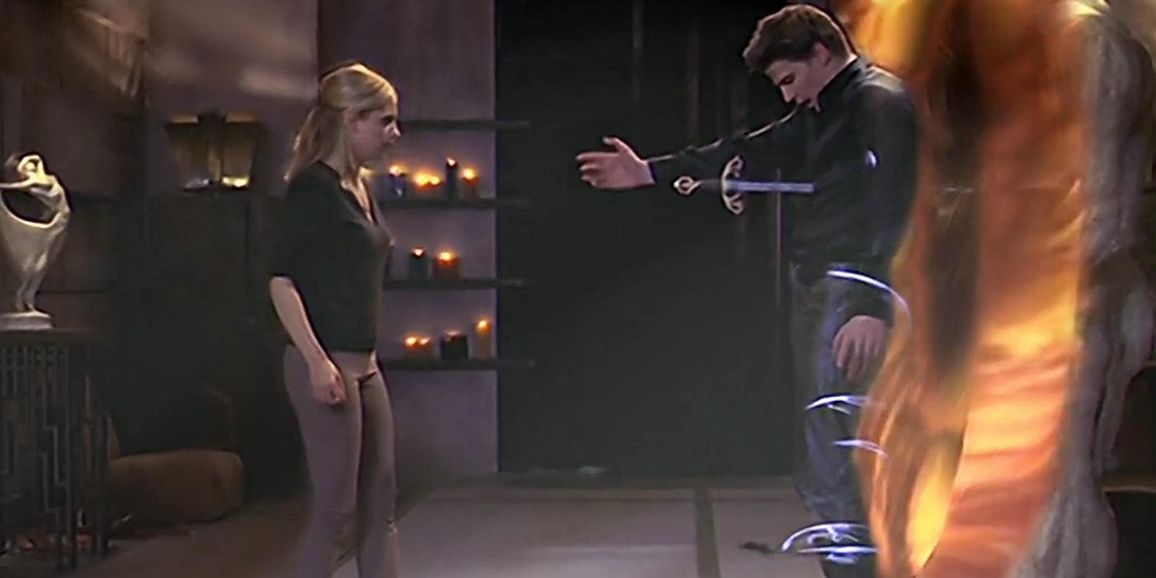“The hardest thing in this world is to live in it,” says Buffy Summers (Sarah Michelle Gellar) at one point in Buffy the Vampire Slayer. While this may seem like just another quippy one-liner from series creator Joss Whedon, the dialogue exemplifies what made the teen fantasy adventure series such an important piece of storytelling. In addition to featuring a rich mythology of characters, creatures, and magic, Buffy the Vampire Slayer examined the challenges of growing up. It’s incredible to think about how characters like Buffy, Willow Rosenberg (Alyson Hannigan), Xander Harris (Nicholas Brendon), Oz (Seth Green), Angel (David Boreanaz), and the fan-favorite anti-hero Spike (James Marsters) evolved since their debut on the series.
Although there are many underrated episodes of Buffy the Vampire Slayer and terrific crossover episodes with its sister series Angel, the series generally attracted the most attention during its season finales. The show’s final episodes typically featured Buffy facing off with the season’s “big bad,” and established important precedents within the characters’ emotional development. Although some seasons of Buffy the Vampire Slayer were better than others, each season finale was able to take the story in an interesting new direction. Here is every Buffy the Vampire Slayer season finale, ranked.
7 “Grave”
Season 6, Episode 22
The controversial sixth season of Buffy the Vampire Slayer forced Buffy to deal with more realistic issues that didn’t have to do with monsters or magic at all. Instead of facing off against a new monstrous “big bad,” the episode “Grave” put Buffy into direct conflict with her best friend Willow. Although Willow’s dark side had been teased as early as the third season, she finally unleashes her villainous abilities after her girlfriend Tara (Amber Benson) is killed by The Trio. Although Tara is killed prior to the finale, the decision to kill one of the show’s few openly LGBTQ characters proved to be one of Buffy the Vampire Slayer’s worst decisions and colored “Grave” in a negative light.
While utilizing Willow as a villain wasn’t necessarily a bad idea, “Grave” suffers from rushing her development. It’s understandable that Willow would be heartbroken by the loss of someone she cared about, but her turn to villainy could have used more time and development. Additionally, the use of The Trio as a primary antagonist felt incongruous with the show’s continuity because the character Jonathan (Danny Strong) had been a hero in previous seasons. “Grave” stands as the weakest Buffy the Vampire Slayer because the final season essentially retcons its events by bringing Willow back to the side of good.
6 “Chosen”
Season 7, Episode 22
If the sixth season of Buffy the Vampire Slayer was guilty of taking many bold risks that didn’t quite pay off, the final season of the series feels dull because everything is played too safe. The final episode of the series, “Chosen,” features Buffy, Willow, Xander, and their allies defending Sunnyvale High School from a mythic force known as “The First Evil.” Buffy helps raise an army of new slayers to defend her old campus, establishing herself as the leader of a new generation of heroes. While it marked the conclusion of the series, “Chosen” helped set up the extended Buffy the Vampire Slayer universe that took place after.
Considering how many bold and controversial decisions were made throughout the course of the series, returning to such a “back to basics” battle between good and evil felt like a step backwards. That being said, the episode reinforces Buffy’s strength as a leader, and completes her character arc in a satisfying way. Having Buffy pass on what she had learned to the next generation of slayers served as a powerful embodiment of the show’s feminist themes. An appearance by Nathan Fillion as Caleb, the embodiment of “The First Evil,” is also quite entertaining, even if he was one of the weaker “big bads” in the series.
5 “Prophecy Girl”
Season 1, Episode 12
The first season of Buffy the Vampire Slayer was less dramatic than its successors, as the characters still felt like caricatures of the heroes they would eventually become. However, the finale “Prophecy Girl” changed the show forever by adding real stakes. Buffy commits her first act of self-sacrifice as she attempts to prevent a vampire leader known as “The Master” (Mark Metcalf) from rising to power. While The Master isn’t necessarily a complex character, his goal of unleashing the Hellmouth was an effective threat that tested Buffy and her freinds’ abilities.
“Prophecy Girl” may not be as intense as some of the other finales, but it succeeded in showing the genuine compassion between Buffy and her friends. Xander and Willows’ fear of seeing Buffy die indicated that the show would be able to move in a more mature direction moving forward.
4 “The Gift”
Season 5, Episode 22
The fifth season of Buffy the Vampire Slayer took the series in a more mature direction as Buffy deals with adult responsibilities, including caring for her younger sister Dawn (Michelle Trachtenberg). Buffy feels the weight of the world on her shoulders as she realizes that the villainous goddess Glory (Clare Kramer) and her human host Ben (Charlie Weber) intend to kill Dawn in order to complete their evil plan.
While the serialization of the fifth season made Buffy the Vampire Slayer feel like it was dumping exposition at some points, “The Gift” answered many of the questions that were lingering in the viewers’ minds. It also revealed why Dawn had made such an unexpected appearance at the beginning of the season. While it’s a dark finale that isn’t as entertaining as some of the episodes ranked above it, “The Gift” showed the emotion that Buffy the Vampire Slayer was capable of generating.
3 “Restless”
Season 4, Episode 22
The underrated fourth season of Buffy the Vampire Slayer featured Buffy, Xander, and Willow heading to college as they set their high school days behind them. While the season began to drag when it focused on a new villainous force known as “The Initiative,” the season finale “Restless” told a completely standalone story. It was a surrealist episode that forced Buffy and her friends to confront their latent fears when they enter into a shared dream, and have visions of the future.
Although Buffy the Vampire Slayer frequently made bold creative choices, it’s still incredible that an episode as experimental as “Restless” aired in the pre-streaming era. Rather than making literal shifts in the plot, “Restless” examines how Buffy and her friends have evolved through vague imagery and metaphors. It’s an outlier within the series that feels closer to an episode of Twin Peaks than anything else.
2 “Graduation Day: Part 2”
Season 3, Episode 22
“Graduation Day: Part 2” wasn’t just a wrap on the third season of Buffy the Vampire Slayer, but a conclusion to the characters’ journey in high school. As Buffy, Willow, and Xander prepare for their high school graduation ceremony, they join forces with the school’s student body to defend Sunnyvale against Mayor Richard Wilkins III (Harry Groener), who plans to unleash hell on Earth. In addition, Buffy must confront the fallen slayer Faith (Eliza Dushku), who has joined forces with the Mayor. It only makes sense that one of the most consequential social events in Buffy’s life would coincide with her most dangerous battle yet.
“Graduation Day: Part 2” does a great job at closing out the high school era of Buffy the Vampire Slayer; Buffy’s heroism in leading the student body showed how she had become an inspirational hero within her class. “Graduation Day: Part 2” also gave a thoughtful exit to the characters Angel and Cordelia Chase (Charisma Carpenter) so that they could appear in the spinoff series Angel. Despite initially being pulled from broadcast due to controversies about its violent content, “Graduation Day: Part 2” ends on a more positive note than many of the other Buffy the Vampire Slayer season finales.
1 “Becoming: Part 2”
Season 2, Episode 22
The second season of Buffy the Vampire Slayer transformed what was originally a fun, light-hearted fantasy adventure series into a disturbing analysis of childhood trauma and guilt. Although the season featured many shocking moments, including the death of Jenny Calendar (Robia LaMorte), the stakes were raised in the season finale “Becoming: Part 2.” Buffy is forced to team up with Spike as they join forces to stop Angel, who has lost his soul and turned into the evil vampire “Angelus.”
While Buffy had faced ruthless villains before, having to fight against someone that she had once loved was a completely different challenge. “Becoming: Part 2” does a great job at showing how emotionally draining it is for her to fight Angelus, as she can’t help but remember the good person that he once was. While “Becoming: Part 2” is arguably the most devastating episode of the series, the unexpected team up of Buffy and Spike added a touch of comedy that foreshadowed their eventual romance.
Watch on Hulu
Source link

